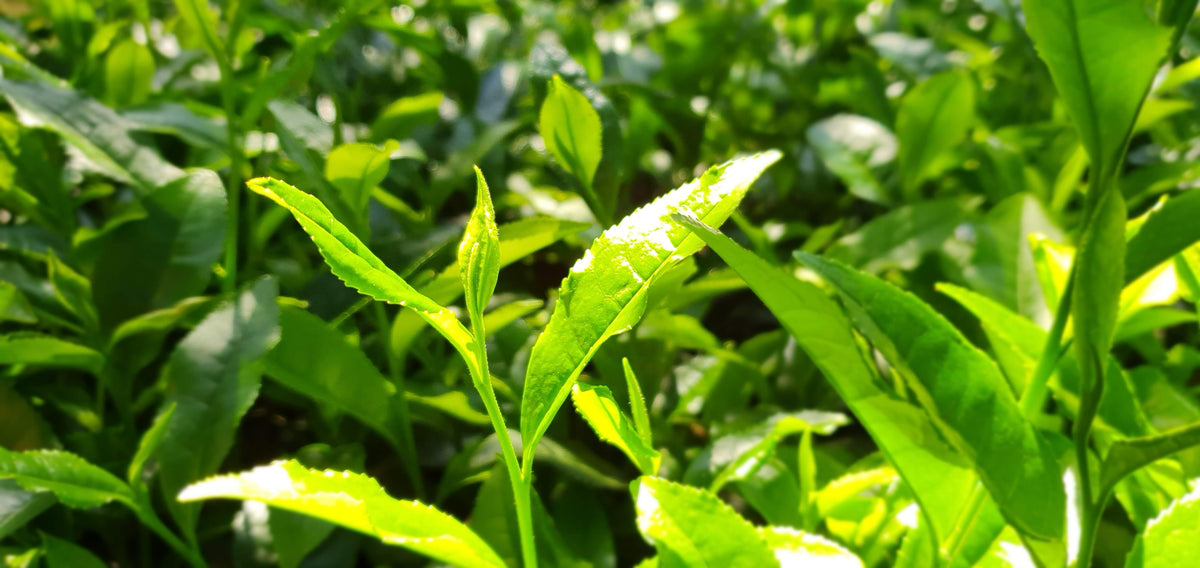Okumidori (おくみどり)
History
In 1974 Okumidori was registered as cultivar No.32 and was a hybrid between the Yabukita cultivar and Shizukuoka Zairai No.16 (静岡在来16号), a native cultivar in the Shizuoka prefecture.
Okumidori produces high-quality Sencha and excellent harvest yield, very much like the Yabukita cultivar.
The leaves of this cultivar have an elliptical shape, very similar to the Yabukita cultivar leaves, yet the leaves are a little bit smaller.
While Okumidori is not as popular as Yabukita, it has many adherents.
Originally Okumidori was developed for Sencha production, but it became more famous for Matcha and Gyokuro production.
Currently, 181 acres of Okumidori are under cultivation. Kyoto and Mie districts started to grow Okumidori in 1999, along with Yabukita, to expand the harvest period for better labor distribution and management.
The Miyazaki and Kagoshima areas also extended the harvesting season by including Okumidori with Yabukita. Fuji-City started growing this variety in 2000.
Okumidori is used as a Tencha in Aichi and a Gyokuro in Fukuoka. In total, 2013 acres of Okumidori are grown in Japan.
Since this cultivar is a late bloomer, it takes about a week longer than Yabukita to harvest. One of its significant benefits is that Okumidori can resist lower temperatures and frost, which often happens at the beginning of spring.
The color of the liquor has a pure, deep green and has no intense yellow hue. Okumidori has a refreshing fragrance, mellow taste, and low astringency when made as Sencha.
Sometimes Okumidori is being criticized because it doesn’t stand out like other cultivars, yet it is a well-rounded tea cultivar without serious flaws.
Okumidori is quite similar to Yabukita, and they are often blended.
Aracha made of Okumidori tends to have stems that are too white, which don’t look right, according to Japanese standards.
But this is just a small weakness, and there are some steps that can be taken to minimize this problem. Usually, it helps to harvest a few days earlier to avoid this small weakness.


0 comments